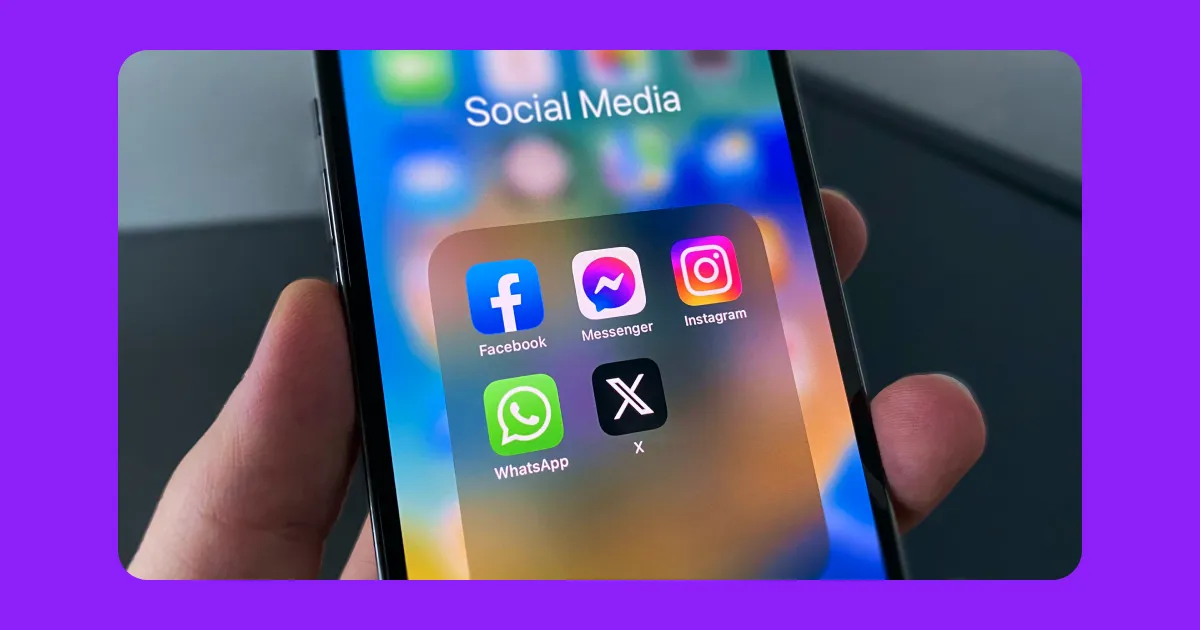For creators, strong writing is one of the most effective ways to make your content stand out. Whether you’re crafting a YouTube description, social post, or email campaign, clear and persuasive language helps your ideas connect and compels your audience to take action. Great copy can mean the difference between someone scrolling past or clicking through.
This guide outlines how to copywrite, from explaining the definition of copywriting to proven strategies for making your content sharper and more engaging.
What Is Copywriting?

Copywriting is the craft of using words to capture attention, build trust, or guide people toward a specific action, such as subscribing. It’s about choosing the right words to create interest and encourage a response.
You’ll find copy in all kinds of places, including:
- Blog posts
- Social media captions
- Instagram bios
- Alt text for images
- Email newsletters
- Product pages
- YouTube scripts
The tone, structure, and messaging of your copy will vary spending on your goal. Here are a few of the most common types of copywriting:
- Direct response copywriting means encouraging immediate action from your audience. It uses straightforward prompts like “Watch the full video” or “Start your free trial.”
- Brand storytelling copywriting is designed to build an emotional connection with your readers over time. Instead of pushing for a quick conversion, it emphasizes values, voice, and long-term trust.
- Content copywriting — or just content writing — focuses on delivering useful, engaging information to keep the reader interested. It shows up in places like blog posts and newsletters.
- SEO copywriting is a specific type of content writing that aims to rank highly in search rankings. You’ll often find it in blog posts and landing pages, but it can apply to content as specific as captions for Instagram stories.
- Social media copywriting is short and designed to grab attention quickly on social platforms. It uses concise, impactful language.
- Email copywriting targets an audience that has already shown interest, by signing up for your newsletter or purchasing a product, to nudge them toward another action.
- Video script copywriting is crafted for spoken delivery. The goal for video scripts is to keep the message clear, natural, and structured in a way that holds attention from start to finish. The same principles apply to writing scripts for podcasts. If you need to create a polished script quickly, try Captions’ Video Script Generator.
Why Is Copywriting Important for Creators?
Good copywriting offers several benefits for content creators. Here’s how copywriting works to get better results.
Boosting Engagement and Visibility
A well-written hook or call to action (CTA) that sparks emotion or curiosity increases the chances of someone liking, sharing, or commenting. It also makes viewers more likely to pause and take in your full message instead of scrolling past.
Driving More Conversions
Copywriting helps you guide readers from interest to decision by making the process feel simple and worth their time. Compelling copy reduces hesitation and gives your audience a reason to take the next step.
Building Your Voice and Brand Identity
The way you write shapes how people remember you. Consistent tone and unique phrasing can make your copywriting and marketing feel cohesive across formats and platforms. Over time, your copy becomes a reflection of your style and brand.
How To Do Copywriting in 6 Steps
Creating strong copy requires a structured process. Follow these steps to write content that feels authentic and performs well.
1. Know Your Audience
Before you write a word, figure out who you’re writing for. Check your analytics and pay attention to what your audience responds to. Develop a simple profile that answers these questions:
- What do they care about?
- What kind of language do they use?
- What frustrates or motivates them?
When you understand their mindset, it’s easier to choose the right tone, examples, and message.
2. Home in on the Goal
In the end, every piece of copy should have one main purpose, such as conveying a complex idea or getting the reader to book a consultation. The more focused the goal, the easier it is to write something that supports it. Avoid cramming multiple objectives into one message, which usually dilutes it.
3. Start With a Strong Hook
A good hook grabs attention and invites curiosity. You might lead with a question, a surprising statistic, or make a bold claim about your product or content. Just make sure it feels relevant to your audience and leads organically into the rest of the message.
4. Write Naturally
Copy doesn’t have to sound fancy to be successful. Write how you’d talk to someone you respect: Use short sentences and natural phrasing to help your message land, and avoid stiff language or filler words.
5. Add Emotion and Social Proof
Use emotions like excitement or curiosity to hold viewers’ attention. If you have it, support your message with social proof, such as testimonials or statistics, to add weight and credibility to your writing.
6. End With a Clear Call to Action
Make the next step obvious — don’t assume people know what to do next. Your CTA should be direct, simple, and easy to follow, like “Download our free guide” or “Tap to learn more.”
Examples of Copywriting Strategies
Once you’ve grasped the basics, the next step is learning how to apply them to fit your content. Here are three strategies to consider.
Use the PAS Formula: Problem, Agitate, Solution
This structure is a reliable way to draw people in and lead them to a specific outcome, particularly if you’re selling a product or service:
- Start by identifying a real problem your audience is facing.
- Add detail that highlights the urgency of the problem.
- Offer a relevant solution that’s easy to understand.
Emphasize the Benefits
One of the simplest ways to improve your copy is to shift the focus from what something is or how it works to what it does. Instead of just describing a tool, product, or piece of content, explain how it can improve the reader’s life. Perhaps it will save them valuable time, or help them reach a personal goal.
Ask, “So What?”
All your copy must explain to your audience why they should care. If you can’t explain the value behind a statement, it might not need to be there. Running this quick test helps strip out fluff and keep your message sharp. It’s beneficial when writing copy that needs to grab attention quickly, like intros, hooks, and video descriptions.
4 Tips For Successful Copywriting

Like any creative pursuit, copywriting improves with a little work and intention. The following four tips can help you sharpen your skills.
1. Practice
The best copywriters didn’t get there by accident — they practiced. Small but steady effort builds your confidence and sharpens your instincts. Study how others write copy, especially creators, brands, and freelance copywriters you admire, to understand what makes good copy and incorporate those elements into your practice.
2. Put the Outcome First
Be clear about the desired result before you start any copywriting. Should the reader request a demo or click a specific link? Knowing the outcome in advance lets you tailor your message around a single goal and helps prevent your copy from drifting off course.
3. Prioritize Clarity
It’s tempting to be witty or verbose — and there’s a place for that — but clarity is key. Simple, straightforward language is easier to understand and more likely to get a response.
4. Test, Learn, Adjust
Copywriting isn’t a fixed formula. It’s a creative process that improves over time with feedback and refinements. Treat your copy like a work-in-progress. Experiment with different hooks, formats, and CTAs. Look at your analytics and pay attention to what resonates and what doesn’t.
Take Your Copywriting Skills to the Next Level With Captions
The more you practice copywriting, the easier it becomes. But even experienced copywriters have moments when it’s hard to capture the message in words.
Captions is an all-in-one creative studio with AI tools for everything content creators need, from automatic video editing to copywriting-on-demand. With the Video Script Generator, enter a prompt describing your message, select your options, and get a ready-to-use script for a new video. It’s a fast and easy way to get from idea to execution without sacrificing quality.
Spend less time battling writer’s block and more time creating with Captions.









